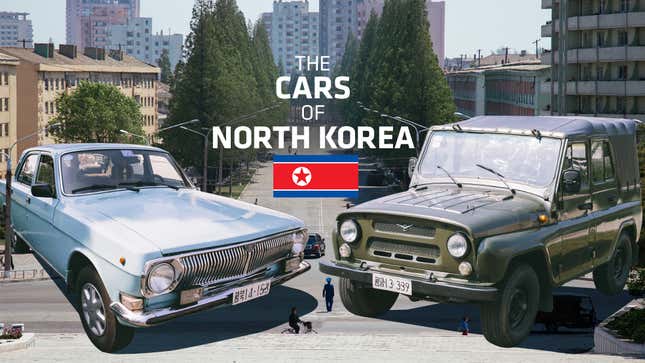
When I found myself in one of the most isolated and mysterious countries on the planet naturally the first thing I noticed was the profound assortment of vehicles in the airport parking lot. Behind the wall of mines and propaganda in North Korea are still people, and many people still like cars.
There was a white United Nations-outfitted G-Wagon with a manual transmission and rubberized interior; an unidentifiable prehistoric-looking squad of military vehicles I had never seen before (or even read about) and to top it off a row of three blacked-out Porsche Cayennes sat in the corner of the small lot.

I was quickly informed that I was not to take any pictures anywhere near the airport.
A few years ago I worked for a luxury tour operator that focuses exclusively on Asia. They make otherwise impossible things happen for very wealthy customers—my old boss once "persuaded" an official from the Burmese Junta to issue landing permits to a client's private aircraft. The company also occasionally organizes private tours to North Korea for clients who want a more intimate experience than standard group tours.
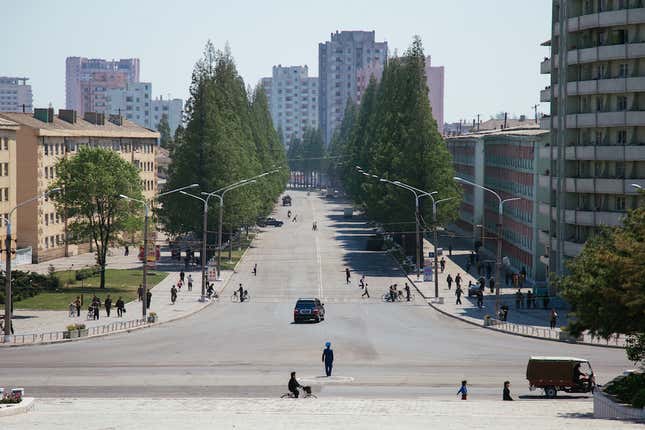
This was my former boss's third time in the Hermit Kingdom and my first. He was there to foster some business relationships and build itineraries for future clients; I was there to see with my own eyes what this highly controversial nation is all about and more specifically check out what kind of cars were on the roads of this nation that frightens the Western world.
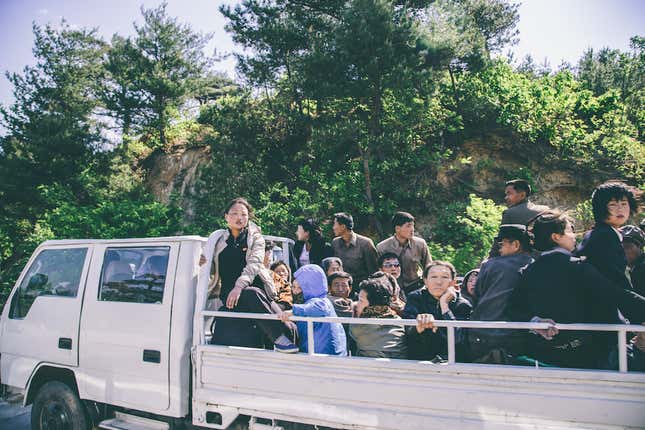
Prior to this trip I was under the impression that, in addition to eating grass, everyone rode bicycles and got around via Ox-drawn carts, but North Korea's cars were singing to the inner car geek in me and I had only touched down 20 minutes ago. The craziest part about it? The ruling party isn't just bringing in any old cars, they have some taste.
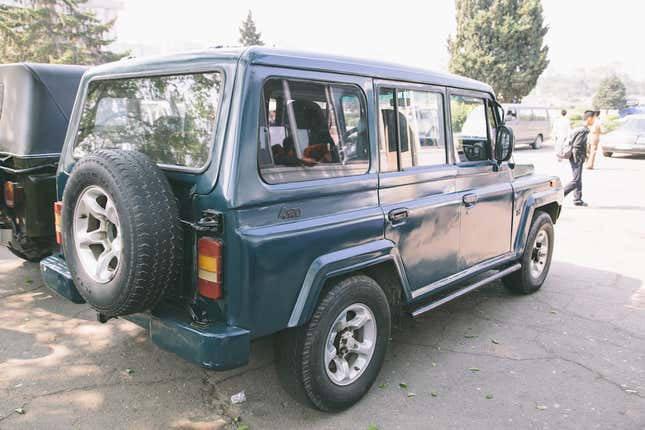
Luxury sedans are a fairly common sight in Pyongyang. It's an ideal place for a carspotter because there's such variety. What I learned from my trip to North Korea is that it's a dream destination for a car guy from the West who has a sense of adventure. Yes, there are newer exotics in Monaco, but the cars you see in North Korea aren't something you'll see on Jalopnik.
Car and Driver ran this piece four years ago. It's very much dated in 2014.
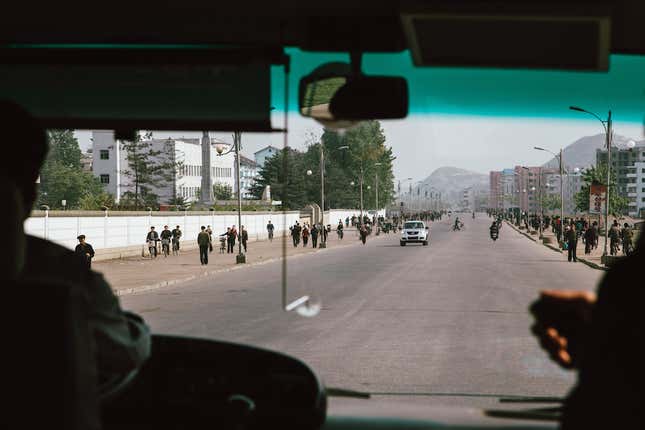
The capital city is changing. Pyongyang's wide open roads devoid of any cars is giving way to the level of traffic that you might find in any "middle American" city, which is to say there's just enough traffic to be noticeable.
It was only recently that traffic lights were installed at major intersections, prior to this the nearly non-existent traffic was controlled by a legion of robotic-yet-attractive "traffic ladies" (remember this viral video?), but their presence is dwindling in 2014 thanks to a recent wave of modernization sweeping the city.
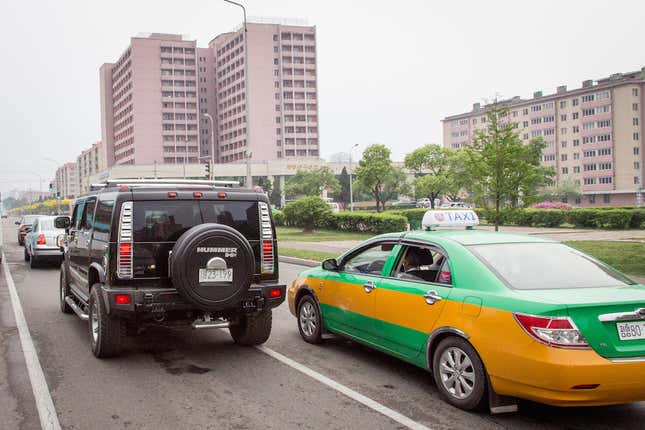
The average breakdown of exactly what's on the road in Pyongyang goes something like this: 30% of the vehicles are olive drab colored "jeeps"; 20% are new (2008 or newer) luxury sedans and trucks like the Hummer H2 and the Audi A5; 30% are older Russian, Swedish, and German sedans from the '50s through the '80s; and the remaining 20% are econoboxes with funny nameplates manufactured domestically in North Korea and imported China
As my tour guide, appropriately named Kim, explained, no one buys a car in North Korea. They're given to people by the party, so that explains the profusion of the ubiquitous UAZ-469, a Russian 4x4 produced by Ulyanovsky Avtomobilny Zavod that has been used by classless nations around Asia since the 1970s. The city is peppered with these trucks, almost toy-like in appearance.
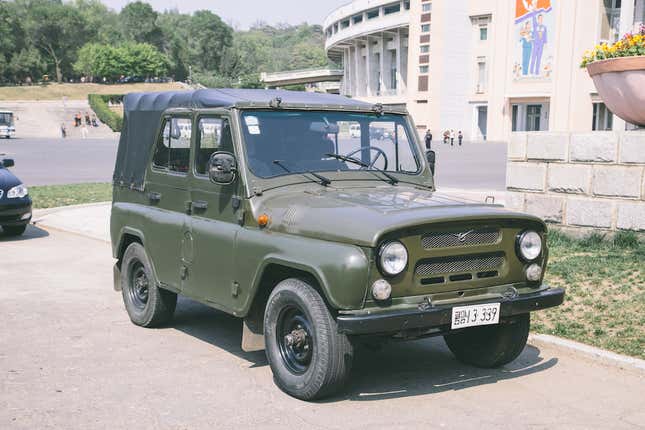
Despite its olive drab cladding, it's the de facto grocery getter for citizens of the Hermit Kingdom, although a trip to the grocery store involves trading coupons issued from the party for goods that are locally produced by work units specializing in a specific food or product.
You'll find the robust UAZ taking youngsters to the fun park, lined up outside the library, and even in school parking lots.
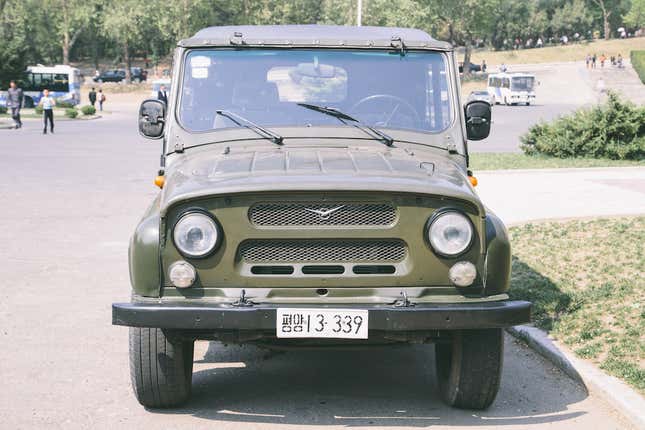
The UAZ might be the most common truck in Pyongyang — a sort of Ford F-150 for the serially repressed — but the presence of military vehicles doesn't stop there. North Korea's interior is very mountainous and can be dangerous to drive through, as the roads are in horrible condition and there are virtually no refueling stops.
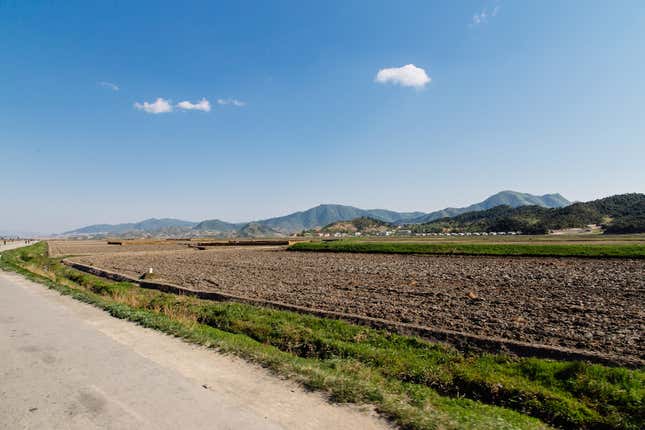
Kim explained that since fuel is hard to come by, the supreme leader used his profound knowledge of combustion engines to develop proprietary technology that enables these large utility trucks to run on fuel produced from what looks like a heating stove mounted to the bed of the truck. The stove is constantly burning wood and coal producing carbon monoxide and hydrogen which is fed to the diesel engine.
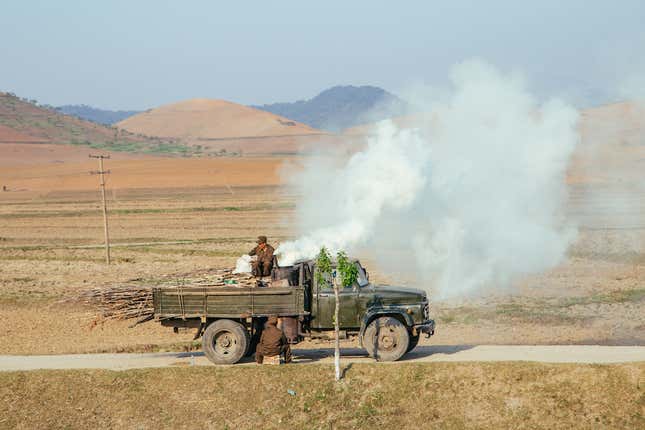
These trucks seem to serve a few purposes. For one, they ferry raw materials from both ports and the capital city to the dozens of rapidly developing satellite cities. In addition, they transport people back and forth through the mountainous interior acting as makeshift busses.

Every forty minutes or so a strong methane and ash smell would fill our van while driving on the empty highways, and after being enlightened by Kim's insight on the wood-burning trucks I realized that this strange smell was the loitering cloud of spent biomass that these trucks had left behind.

In some ways it's a good thing there aren't a great deal of these on the road. The upside of a nation with a controlled number of automotive units is less pollution overall, but that's a small price to pay for the smell.
It wouldn't be North Korea without a little absurdity, and in the automotive world that comes in the form of a car company called Pyeonghwa motors. This manufacturer is a joint venture between the South Korea and the North. They're produced in the DPRK but oddly the amount of Chinese BYD (Build Your Dream) econo-cars seem to greatly outnumber the domestic copycat Pyeonghwa designs. During my weeklong stay I only spotted 3 of these mysterious cars.
It seems like imports are strongly favored over domestically produced vehicles.
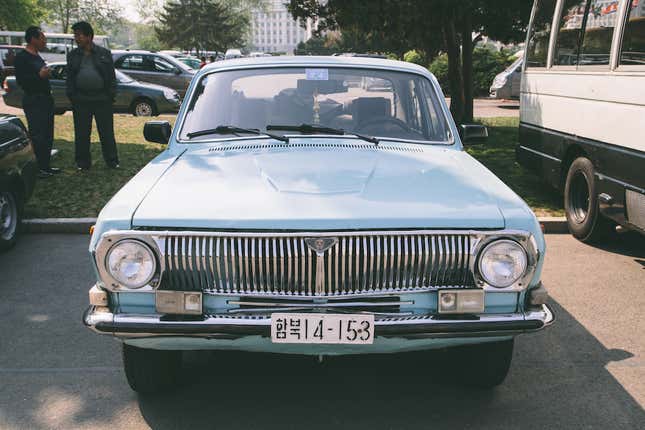
A good amount of the cars on the road look like they landed in the 1970s and have been driven every day since. A common sight is the Russian workhorse the Volga. The boat-like sedan has just about as much character as you would expect from a "luxury" vehicle produced in Soviet era Russia.
It's typically used as a taxi in former Bloc nations, but in the DPRK it does enjoy somewhat of a luxury status. Oddly enough, there are plenty of taxis roaming the streets of Pyongyang, though they're rarely occupied with paying passengers. The yellow and green taxis could be just a show for foreign visitors as very few citizens have the means to pay for such services or travel freely.
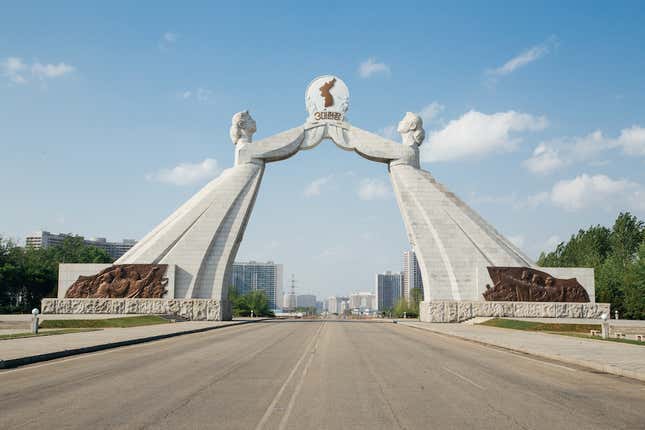
While a few things CNN spins about the DPRK are true, the idea that it's a land with zero car culture is certainly not.
The Juche (self reliance) philosophy (which is an Orwellian euphemism for "lack of money:) means that the hermit nation manages to maximize the utility provided by their fleet of vehicles by keeping cars alive and on the road rather than in the scrapyard.
Though it seems strange, sometimes totalitarian regimes have policies that offer car guys some spillover benefits. While wrenching on cars is a necessity for most, as it is with Cubans, there's also an obvious pride people take in having and maintaining a vehicle, no matter what that vehicle is.
There are some more photos from my journey below. Notice anything interesting?
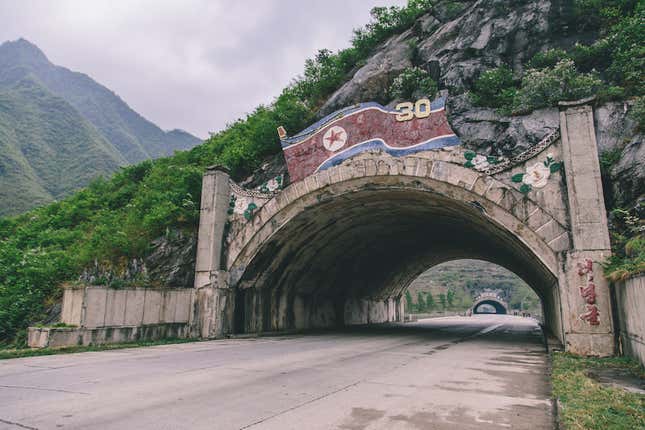
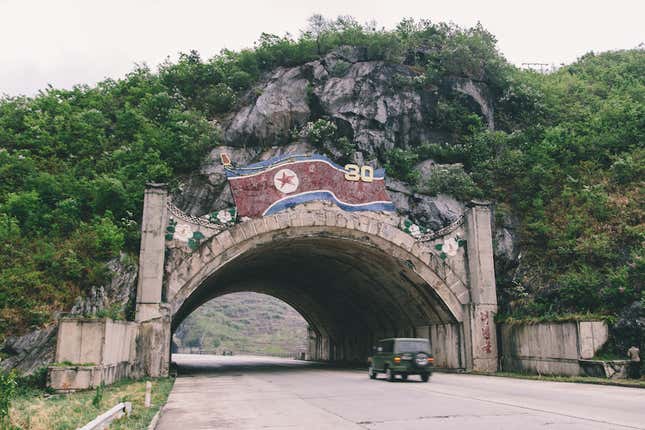
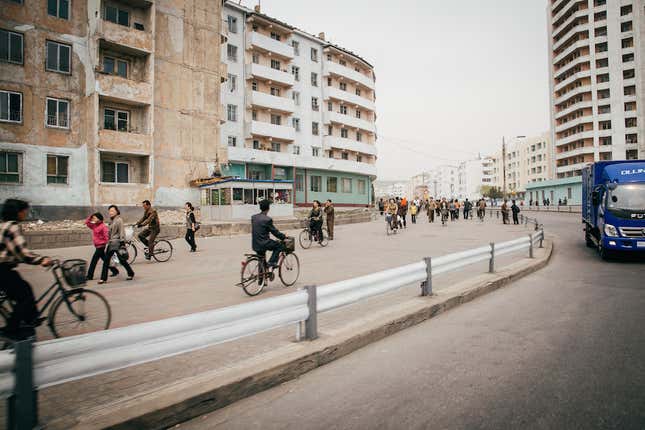
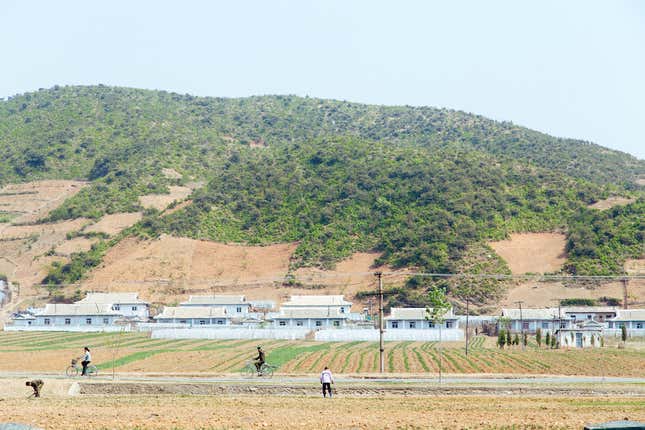


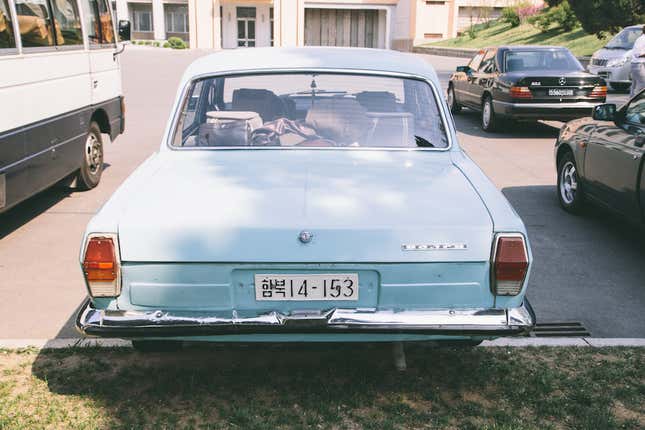
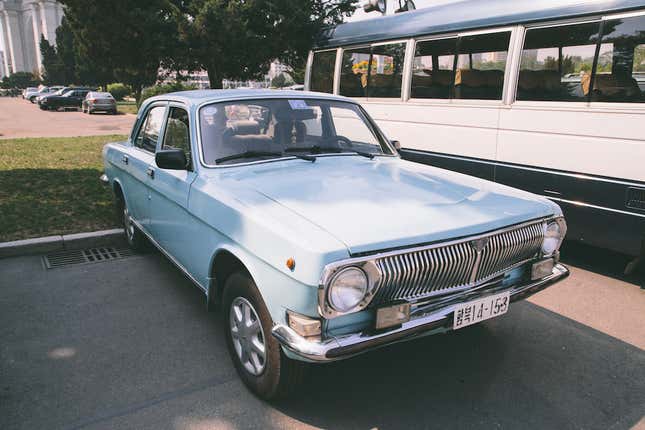
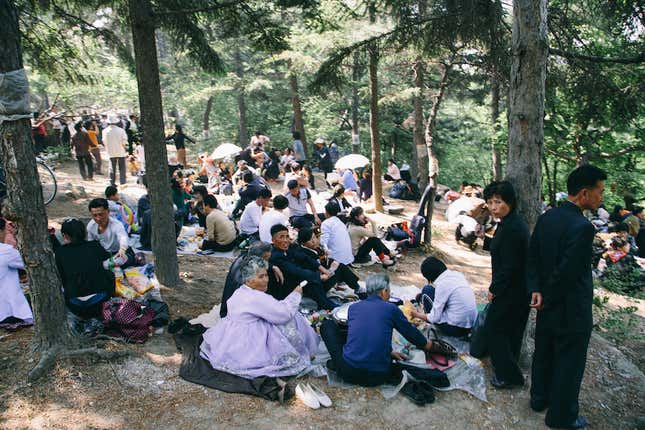
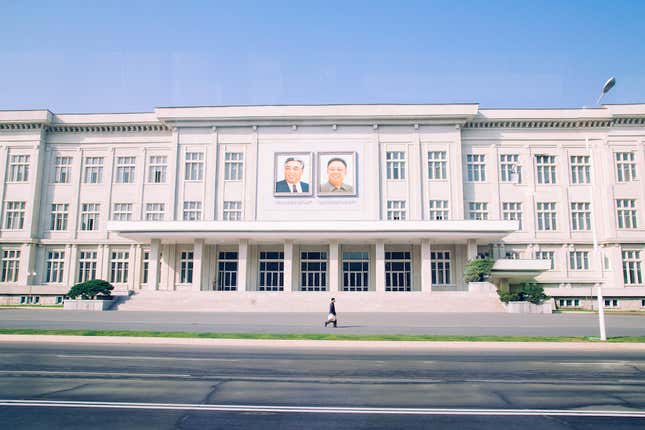
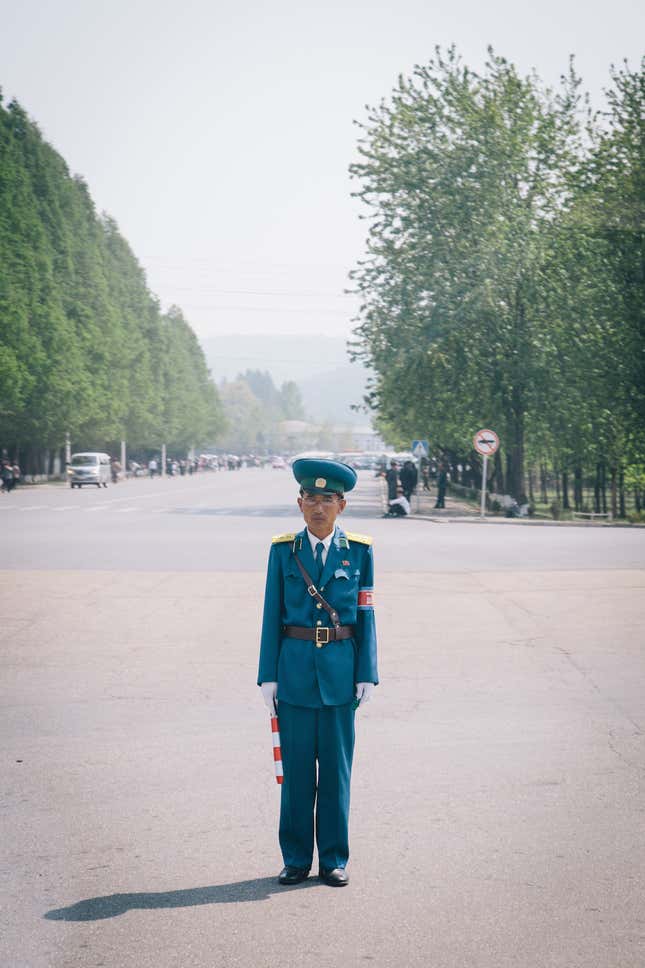
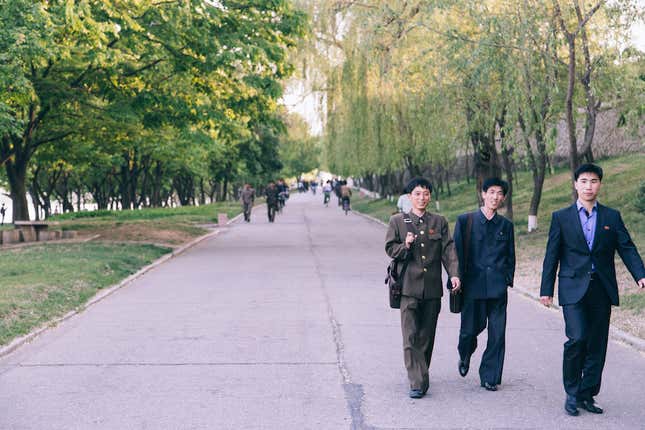
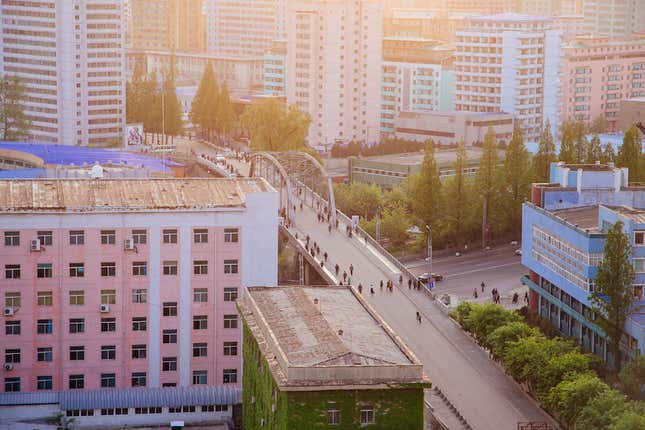

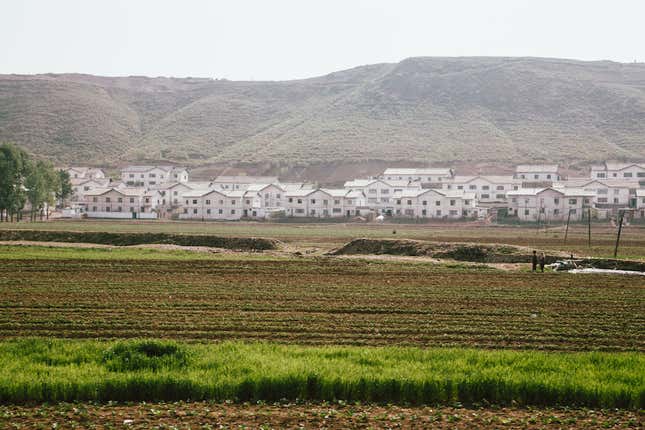
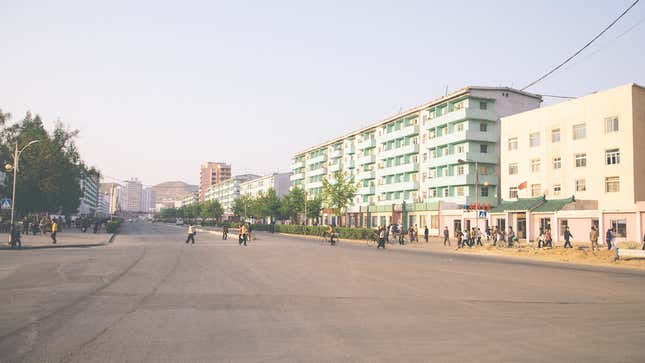
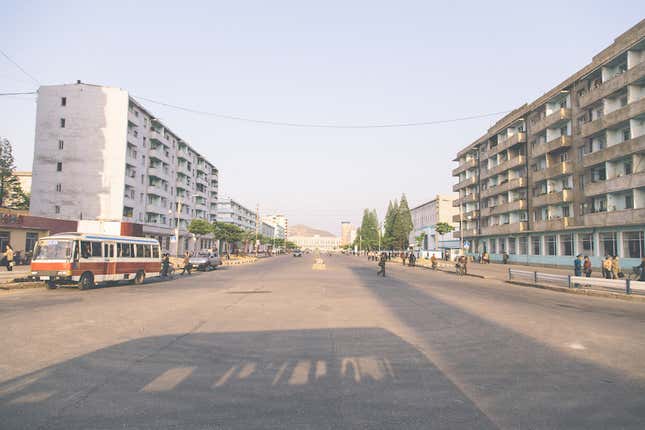
Thaddeus Stapleton currently works in advertising having formerly worked for a tourism company that brought people to North Korea. He's writing under a nom de plume because he hopes to visit the country again. Photos by Radcliffe Marxwell, illustration by Jim Cooke.